In the early days of search engine optimization (SEO) and digital content creation, the term “above the fold” was used quite a bit. This newspaper concept—where important stories appeared on the visible top half of folded papers—translated seamlessly to web design. While search engines have evolved in how they evaluate this content, understanding above the fold SEO remains essential for businesses seeking to maximize engagement. Strategic placement of key elements in this prime digital real estate directly impacts how users interact with your site, influencing everything from bounce rates to conversions.
What is Above the Fold Content for SEO?
Above the fold refers to content that appears near the top of your web page or blog. This is the content that the user can see without having to scroll down. The amount of content above the fold varies from site to site and across different devices. The importance of content above the fold was highly prioritized by search engines when it comes to SEO Rankings, meaning that you had to have all the relevant content above the fold for your post to rank well.
However, as technology has continued to evolve, so have Google’s requirements regarding the importance of content above the fold. Before diving into the SEO benefits of the content above the fold, it’s important to understand where Google stands on the topic.
Google’s Thoughts on Above the Fold Content
Google has made it clear that content above the fold isn’t as important as it used to be. In fact, during the Google SEO Office Hours on May 7, 2021, Google’s John Mueller addressed the topic of above the fold content and whether or not they prioritize content above the fold like they once did.
When a user asked whether Google preferred content above or below the fold, Mueller replied, “I don’t think we have any strong preferences.” This means that content placement doesn’t carry the weight it once did before AI and language learning.
What he did say, however, is that they do want to see some content above the fold. Websites with large headers that take up most of the screen and cut out most of the content would be considered “problematic“.
Remember, Google’s guidelines specify that they want to rank user-friendly, easily accessible sites and provide searchers with real value. If they have to scroll down your page too much before they get anything of value, then this can hurt your overall ranking.
3 Benefits of Above the Fold SEO Content
When it comes to SEO, the content above the fold is essential for several different reasons. While Google may not prioritize it as much as it used to, it can still have a significant impact on a website’s overall success. Here’s why:
Where Your Content Falls Determines How Long Your Audience Stays on Your Page
When it comes to getting viewers to stay on your site, the content above the fold can play a huge part in how long they stay. It’s essential to keep your audience engaged and ensure that they stay on your site as long as possible. The more time someone spends on your site, the more likely they are to become engaged with your brand and return to it.
Users form impressions of your website incredibly fast. By strategically placing compelling content above the fold, you create an immediate connection with your audience. Proper above the fold SEO implementation means presenting your value proposition clearly before users need to scroll, improving the likelihood they’ll invest more time exploring what you offer.
It Helps with User Experience
User experience is extremely important for SEO. If your site has a good user experience, you will have an easier time convincing users to share it with others, which will lead to more traffic and more conversions.
The content above the fold plays a huge role in this experience. If your users have to scroll down the page to see anything of value, they’re more likely to bounce, which will negatively affect your overall conversion rates.
Also, within that content, remember to utilize calls to action that direct users to where you would like them to go along your conversion funnel. If they have to scroll too far to find a call to action, they will likely not see it, therefore, missing the opportunity to convert. And we all know that at the end of the day, conversions matter!
It Helps You Get More Social Shares
Social media is a huge part of any business’s online marketing strategy. The more shares you get from your content, the more likely your target audience will see it. Having content above the fold will make it easy for people to share and more likely for an extended audience to actually see your content.
Another benefit of having content above the fold is that a small snippet of the content will be automatically included when shared on many social media platforms, such as Meta (Facebook). Most people who share your content won’t take the time to edit the snippet that shows when they hit the “share” button, so you want to make sure you include relevant information in that snippet for them.
What Content Should Be Above the Fold?
When planning your above the fold SEO strategy, several key elements deserve consideration for this prime position. Your unique value proposition should be immediately visible—visitors should instantly understand what makes your offering special. Include a compelling headline that incorporates relevant keywords while clearly communicating your page’s purpose.
Navigation elements should be intuitive and streamlined, helping users find what they need quickly. Pages designed for conversion should make call-to-action elements prominently visible without forcing users to scroll. Visual elements like hero images can create immediate emotional connections while supporting your content goals.
For content-focused pages, providing a clear introduction or summary above the fold helps users determine if the page meets their needs. Search-oriented pages benefit from placing above the fold SEO elements like breadcrumb navigation or search filters in this prime position. The most successful websites strike a careful balance between visuals, functional elements, and informative content in their above the fold design.
Best Practices for SEO Above the Fold Content
Utilize a Responsive Website Design
With mobile devices accounting for over half of all web traffic, a responsive design is essential for effective above the fold SEO. Your content must adapt seamlessly across devices with varying screen sizes, ensuring important elements remain visible without scrolling, regardless of how users access your site. This adaptability improves user experience while meeting Google’s mobile-first indexing requirements.
Responsive design means rethinking your content hierarchy for different contexts. What works above the fold on desktop might need reconfiguration for mobile users. Testing your site across multiple devices helps ensure your above the fold SEO strategy works consistently for all visitors.
Optimize Your Website Header and Navigation Menu
Your header represents valuable above the fold real estate that must balance multiple priorities: brand identity, navigation, and conversion elements like search bars or call-to-action buttons. An effective header should be compact enough to leave room for compelling content while providing clear navigational paths. Many successful sites use sticky headers that remain visible as users scroll.
Keep Your Page User-Friendly
User-friendliness is crucial for effective above the fold SEO implementation. Create a clean, uncluttered design that guides visitors’ attention rather than overwhelming them. Clear visual hierarchy helps users process information efficiently, while appropriate white space improves readability and focus. Typography choices should prioritize legibility, particularly for important content elements.
Accessibility considerations also play a key role. Ensuring sufficient color contrast, readable font sizes, and proper element spacing makes your above the fold content usable for everyone, including those with visual impairments.
Ensure Your Page Loads Fast
Page speed is perhaps the most critical technical aspect of above the fold SEO optimization. Users quickly abandon sites that take too long to load. Google’s Core Web Vitals metrics emphasize Largest Contentful Paint (LCP), which measures how quickly the largest above the fold content element becomes visible to users.
To optimize load times, consider implementing lazy loading for below-fold images, minimizing render-blocking resources, and utilizing content delivery networks. Compress above the fold images without sacrificing quality and prioritize the loading sequence to ensure the most important elements appear first. Every millisecond saved can improve user engagement metrics.
Create an Engaging Website Design
Visual appeal plays a significant role in how users perceive your site in those crucial first moments. Effective above the fold SEO incorporates design elements that create immediate emotional connections while supporting your content goals. This includes high-quality hero images, product visualizations, or brand elements that reinforce your identity.
Use color psychology strategically in above the fold areas to evoke specific emotions or highlight key elements. Animation and interactive elements, when used judiciously, can draw attention to important features without distracting from core content. The best above the fold designs balance visual interest with functional clarity, creating experiences that are both beautiful and effective.
Always Analyze Performance Metrics
Continuous improvement of your above the fold SEO strategy requires diligent performance tracking. Key metrics include bounce rate, which indicates how many visitors leave without engaging further; time on page, which shows how compelling users find your content; and scroll depth, which reveals how far down the page visitors typically explore.
Heat mapping tools provide visual representations of where users click and how far they scroll, offering valuable insights for above the fold optimization. A/B testing different configurations can reveal preferences among your specific audience. By establishing baseline metrics and systematically testing improvements, you can refine your approach based on real user behavior rather than assumptions.
Find Your Content Sweet Spot with CadenceSEO
When it comes time to determine where your most important content should fall, it can be quite the toss-up. Instead of leaving it up to chance, let CadenceSEO help. CadenceSEO is a full-service digital marketing agency and consultancy that specializes in comprehensive SEO strategies that blend technical expertise with creative content solutions.
Our team understands the delicate balance required for effective above the fold SEO implementation. We’ve helped businesses across industries transform their online presence through data-driven optimization focused on higher rankings, increased traffic, and improved conversion rates.
Our SEO experts and web designers can help you create a website that looks great, is easy to navigate, and contains all the content that your users are looking for. Don’t leave your prime digital real estate to chance—partner with specialists who understand how to maximize its impact. Book your free consultation with CadenceSEO today!
References:
https://www.cadenceseo.com/seo-marketing-consultant/
https://www.cadenceseo.com/tools/seo-ranking-checker/
https://www.youtube.com/watch?v=0h8YslnIuuY&t=3344s
https://www.searchenginejournal.com/google-preference-content-above-fold/406258/
https://www.cadenceseo.com/blog/seo-and-user-experience-do-they-go-hand-in-hand/
https://www.cadenceseo.com/blog/covert-traffic-to-leads/
https://www.cadenceseo.com/blog/8-steps-to-find-your-target-audience/
https://www.cadenceseo.com/seo-marketing-consultant/keyword-research/
https://www.cadenceseo.com/seo-marketing-consultant/seo-content-creation/
https://www.statista.com/statistics/297137/mobile-share-of-us-organic-search-engine-visits/
https://www.cadenceseo.com/blog/a-comprehensive-guide-to-mobile-seo/
https://developers.google.com/search/docs/appearance/core-web-vitals
https://www.cadenceseo.com/digital-marketing/web-design-assistance-services/
https://www.cadenceseo.com/blog/seo-a-b-testing-what-is-it-how-does-it-work/
https://www.cadenceseo.com/free-consultation/






